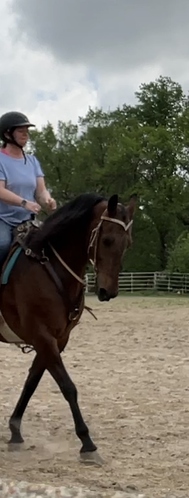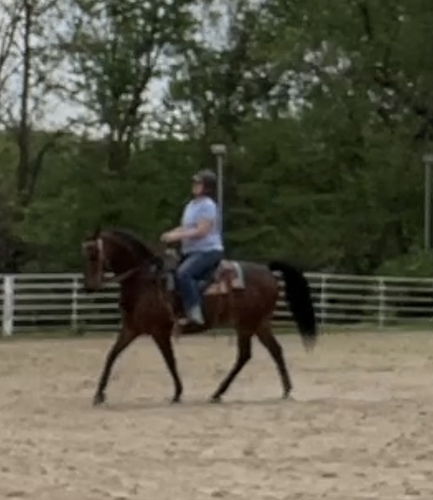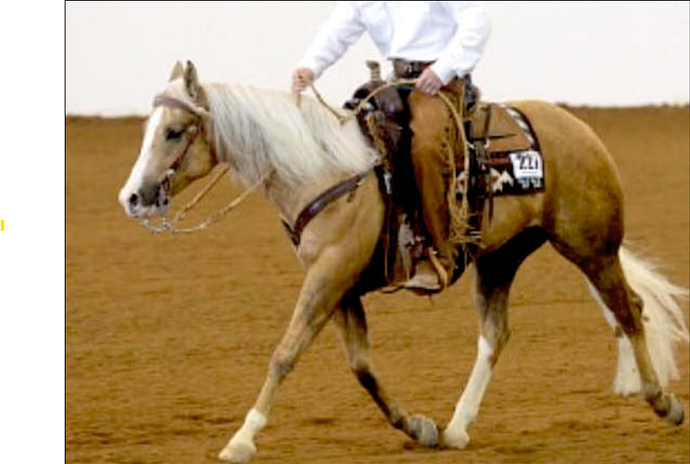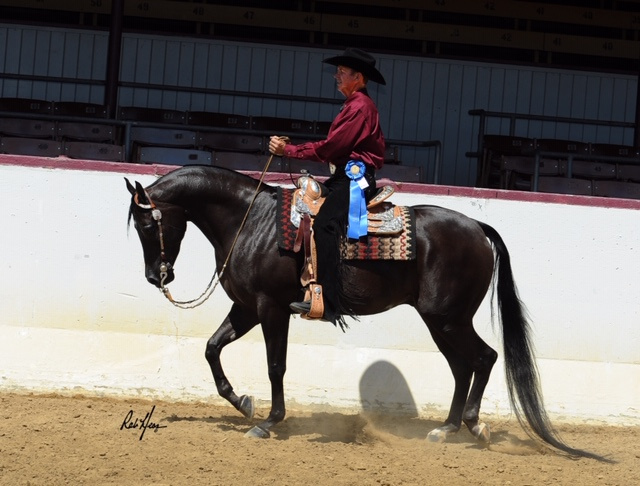I apologize for forgetting some important picky details.
Last night my mind was reviewing this discussion. Then I remembered that the shanks on most Western curbs are LONGER. The shanks on my Fager Victoria Mullen mouth Weymouth are 7 cm. long.
The shanks on a lot of the Western curbs are 7 INCHES long, much longer.
I tried to keep contact with 7" shank curbs 4 times. The first time was with my great antique store find ($1.50 in 1970) a iron (not steel) Tom Bass style saddle-seat Weymouth curb, used as part of a double bridle. I got the bridoon rein sagging, shortened my curb rein some, used my lower legs to ask the horse to extend into contact, the horse immediately stretched out to contact, met the mouthpiece, and very politely went behind the vertical. The horse was not distressed, he just politely and quietly got his head where the bit felt comfortable to his mouth. I immediately stopped trying to keep contact and we went back to our normal, quiet and cooperative ride.
I tried this experiment with this particular bit on another horse decades later and got an identical reaction, a quiet and non-dramatic refusal to meet the mouthpiece of the bit properly, resulting in going behind the vertical.
I tried this twice on another 7" shanked bit, a Walking horse bit with somewhat of a port, whose barrel slid up and down about 1/4" on the shanks, with the bottom of the shanks curved back like a lot of Western bits. I tried this on two seperate horses, over a decade apart, and both horses politely went behind the vertical and completely ignored my mild leg suggestions to stretch to meet the mouthpiece. Both horses went back to their calm obedient normal when I stopped trying to keep contact with this curb.
Last night I figured out that IF I had moved my hands forward faster I might have prevented the horses feeling like they needed to go behind the vertical. The longer shanks increase the distance the bottom of the shanks travel as the horse moves its head forward and back, meaning that I really needed to speed up the movements of my hands to keep that light, responsive contact. With my MS this is just beyond what my nervous system can handle, people with normal nervous systems can probably do it OK.
The other picky detail I picked up the last decade or less deals with the placement of the curb bit in the horse’s mouth. IF the mouthpiece of the curb rests vertically above the curb groove, then the curb chain of a curb bit with the “normal” 1 1/2" purchase automatically falls into the curb groove. This is important! The skin there does have a thin layer of fat, and the bone under it is SMOOTH where the curb chain or strap lies. If the curb chain goes further up the bottom of the skull up to the sharp, thin bones of the lower jaw the curb chain or strap can cause the horse great pain. These bones are not smooth and broad, they are thin and sharp, and there is no padding under the skin. No sane horse who is not a masochist likes the feeling of a curb chain or strap there in constant contact.
Both of the 7" shank bits I tried contact with had the longer purchase (the part of the shank above the center of the mouthpiece where it meets the shank), therefor the chain/curb strap went up onto the sharp bones and the horses immediately went behind the vertical.
Sorry for the novel, but I have found out that horses can be really, really sensitive to the difference of a 1/4" in the tack, especially where bits are concerned. The mouthpiece of the curb belongs right above the curb groove, NOT up to the corner of the lips (unless the horse has a short mouth.) The purchase of the bit HAS to be short enough to enable the curb chain to fall into the curb groove. With a Weymouth curb USE A LIP STRAP, this helps prevent the curb chain from migrating up to the sharp bones of the lower jaw.
Happy bit searching.
With great sensitivity and care a rider CAN ride with contact with just a curb bit. When the horse relaxes and is willing to reach out with his muzzle you will know you are doing it RIGHT.







 I personally think your horse looks more ranch-like.
I personally think your horse looks more ranch-like.